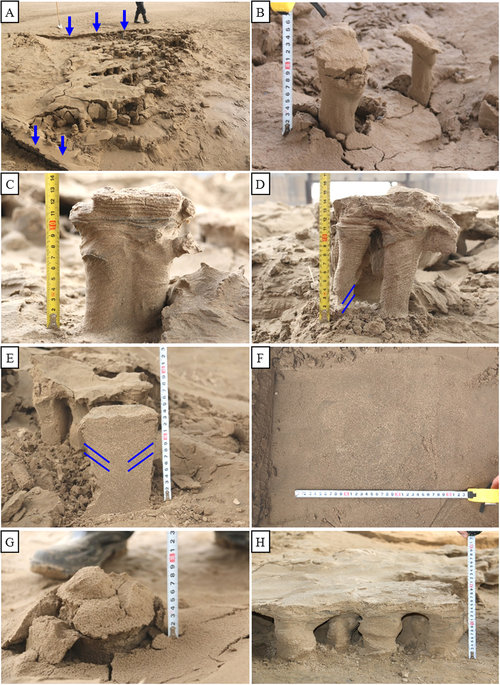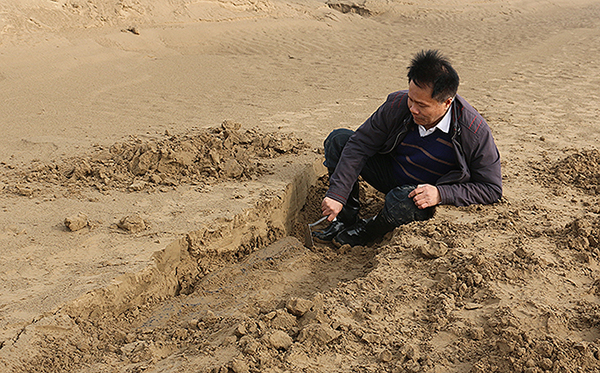Recently, Zhong Jianhua's group from College of Geoscience made new findings on the study of Sedimentary Structure, with the paper A New Unusual Ice-induced Sedimentary Structure: the Silt Mushroom released online by Scientific Report. It is the cowork finished by Prof. Zhong Jianhua, the first author, and his postgraduate.

The Yellow River, is the second largest river in China, and is well known for the highest levels of mud and silt in the world. In the early 2000’s, many sedimentologists undertook a large degree of research upon the Yellow River, obtaining many accomplishments including the discovery some ice-induced sedimentary structures. Based on the previous study, the paper is to discover a unique ice-induced sedimentary structure that has not been documented yet. As it looks the similar to a mushroom in its shape,being in the range of 1 to 10 cm in diameter, with the medium 3–5 cm, and on average 10 cm in height, occuring generally in groups, and occasionally in isolation in relatively soft silt, this new sedimentary structure is termed an ice-induced silt mushroom. More remarkably, this exquisite and peculiar sedimentary structure, formed through natural processes, has hardly been documented in the major sedimentologic publications or papers. Consequently, it is believed that these newly discovered ice-induced silt mushrooms are a novel sedimentary structure, which is of great scientific significance and aesthetic value. They develop in the transition from winter to spring, and are convincingly related to ice processes. Ice-induced silt mushrooms are best examined in association with the many other newly discovered ice-induced sedimentary structures (over 20 kinds). Clearly, up to now, ice processes have been significantly underestimated. With the substantial discovery of the ice-induced silt mushroom, it opens up new questions. This is because its structure mirrors the same sedimentary structures found in rocks, questioning their genesis, and sedimentary environment analysis. This achievement is significant not only in sedimentology, but also in palaeogeography, palaeoclimate, geological engineering, hydraulics and fluviology. see more about the paper: http://www.nature.com/articles/srep36945

Sedimentary structure is one important part of sedimentology. Prof. Zhong has been dedicated to the research work on sediments of the Yellow River since 1996, with more than twenty sedimentary structures been discovered and explained. Scientific Reports is the comprehensive journal of Nature publishing group. It mainly covers the new progress on physics, chemistry,biology, material and other areas.
Editor: Bu Lingduo
Source: UPC News Center